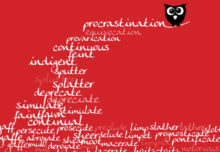We all make quirky mistakes while writing that we usually don’t notice – and they vary from person to person. I, for example, have a bad habit of repeating words and not seeing them, such as by writing the cat jumped jumped over the dog.
The reason why we don’t notice our own mistakes is that we know what we intended to say – and so our minds, being too clever for our own good, automatically skip over them.
This is where proofreading routines come into play.
One of the things I do during my final proof is force myself to focus on every word – and roughly once every three days I’ll notice a whopper while doing so.
The best way to focus on every word is to print out the draft and then put your finger on the paper, moving it along to block out the word after the one you’re reading so you have no option but to notice each word. However, if you can’t print out your draft then you can still read word by word on a screen – though it does take more effort.
If you want to learn more tips like this, I’ve created some PDFs you can print out and refer to.
You can download a cheatsheet filled with proofreading tips as well as a step-by-step proofreading guide from Writing Essentials, which is my new international website (Media Survival will continue to run and be my main business for Australian training and consultations).
I hope you find them helpful.
Become a better writer by taking the Writing Essentials online course
This fun, practical and easy to follow self-paced course will teach you how to:
- write in the active voice
- use positive language
- cut copy
- make your intros stronger
- write in plain English
- use the right tone of voice and style
- write in the inverted pyramid style
- know what makes a story interesting
- frontload content
- spot common grammar and punctuation mistakes
- proofread your own work
- write great headlines.
To keep things lively – and make sure you’ve absorbed what you’ve just learnt – there are also plenty of exercises throughout the course.
Equivalent to a full-day workshop, there are six sessions that each take between 45 minutes to an hour and a half.
Find out more and enrol



